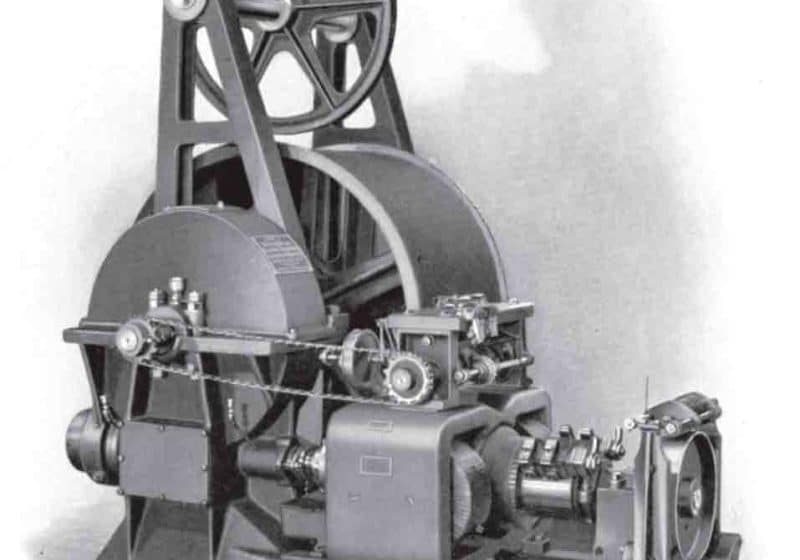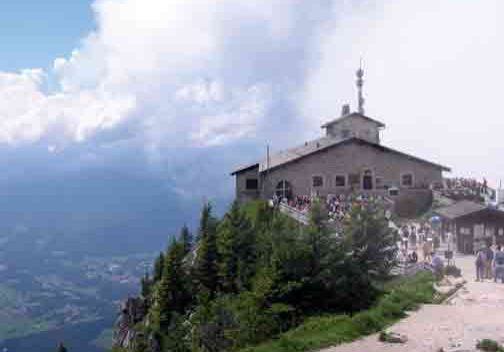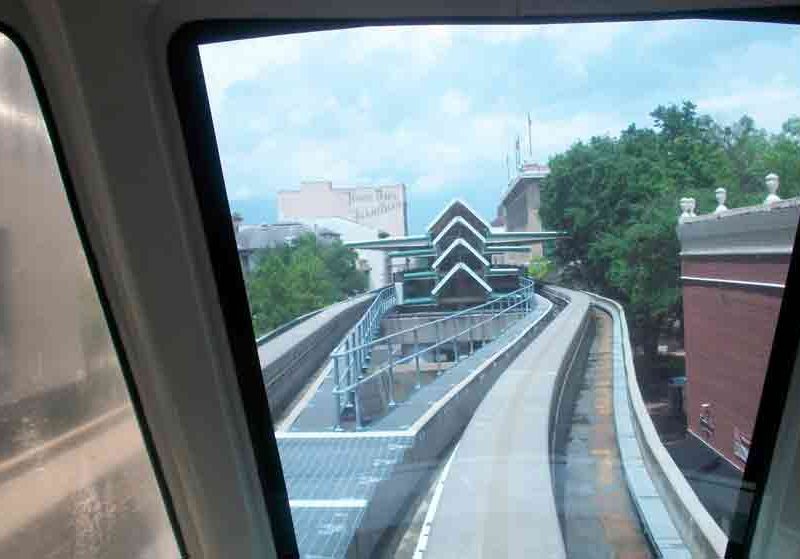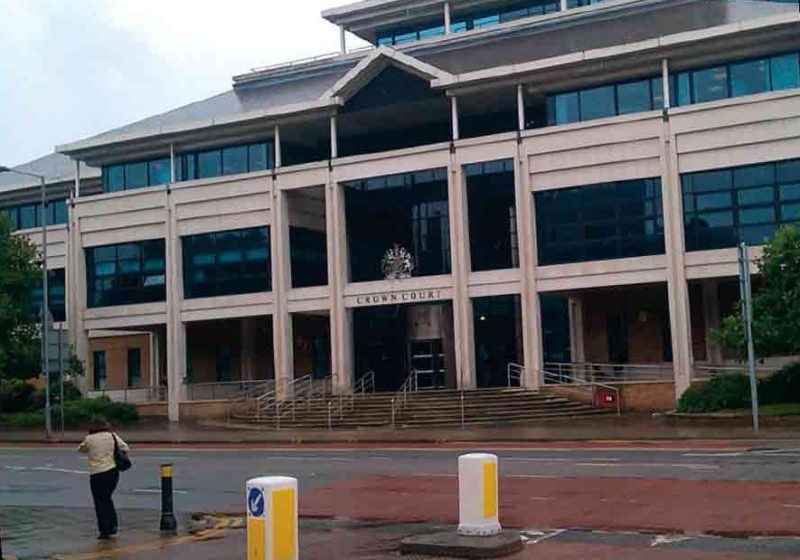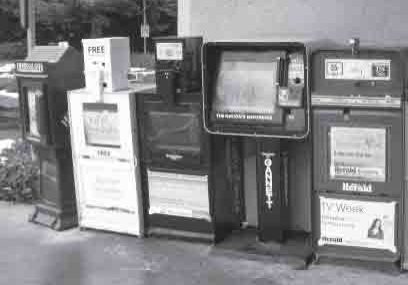The Future City – A Study on Urban Development and Future Transportation Needs
Sep 1, 2012

The importance of combining horizontal and vertical transportation in growing cities
by Elena Cortona and Frankie Schmid
This paper was presented at  USA 2012, the International Congress on Vertical Transportation Technologies and first published in IAEE book Elevator Technology 19, edited by A. Lustig. It is a reprint with permission from the International Association of Elevator Engineers
USA 2012, the International Congress on Vertical Transportation Technologies and first published in IAEE book Elevator Technology 19, edited by A. Lustig. It is a reprint with permission from the International Association of Elevator Engineers  (website: www.elevcon.com). This paper is an exact reprint and has not been edited by ELEVATOR WORLD.
(website: www.elevcon.com). This paper is an exact reprint and has not been edited by ELEVATOR WORLD.
Key Words: Future cities, trend analysis, urban mobility, vertical transportation, buildings, transit management
Astract
The following trend analysis was compiled in collaboration with universities, investors, general contractors and freelancers. The report provides a glimpse into the future and tries to explain the role models for future cities and transportation media. Since many aspects and influential factors are involved, we have tried to merge, bundle and simplify the major topics of urban mobility. The main focus is on various trends relating to people and their behavior, such as mobility, communications, energy and supply management. This paper will explain how the cities’ growth in height will impact the elevator industry and the way in which people and goods will be transported.
1. Global Trends
The twentieth century was characterized by rapid, remarkable and homogeneous changes across the world. At the beginning of the century, the world’s urban population accounted for approximately 10% of the total and increased twentyfold to represent 60% of the world’s population by the end of the century. As a trend, urbanization is having diverging impacts and influences on our lives and is changing mobility between and within cities.
Although we can see contradictory demographic evolution in developing and developed countries, we also have a clear trend toward globalization for the first time, with interdependent economies and financial, social and information democratization.
In this constellation, environmental aspects and sustainability play a key role as the counterparts of very high prices for raw materials and commodities. New aspects related to the large concentration of people in the same place, from goods and waste management through to the need for security and individualization are changing the way cities are built as well as of how people move within them.
Despite geographical differences, all cities are also growing in height. As a result, where mobility in the last century is concerned, we introduced the vertical component in the way people, goods and waste are transported. Years ago, Schindler recognized that urban mobility in the city of the future could be summarized as transit management, as the integration of horizontal and vertical mobility, combined with passengers’ security and individualization.
We have projected the megatrends and possible developments in the elevator industry in a global calendar over the years ahead.
- 2012 Our clothing gets smart: electronically controlled wash tags, embedded sensor with GPS system First multi-use, super-tall buildings with populations of over 30,000 in operation
- 2012 1 billion people are using online video and TV over internet. Monitors will be integrated into mirrors, sunglasses and furniture
- Transit management is introduced in large, high rise buildings. People are guided through the building.
- 2014 Buying power in the Far East increases. The consuming middle class of China is larger than the population of the U.S.
- 2015 Hydrogen-powered fuel cell cars are available They only produce steam as exhaust
- Vertical and horizontal transportation is fully integrated in large, high-rise buildings
- 2016 Urbanization results in a new record: 4 billion people are now living in cities
- 2017 Virtual artists appear – the most creative computers generate their own artwork
- 2018 Artificial Intelligence is supporting daily life – it analyzes decisions, is self-learning and can identify
emotions and moods- Elevators recognize passengers and their destination, no calls are actively given
- 2019 Automatic guidance and surveillance systems are installed on the roads
- Transportation to, from and within buildings is fully integrated
- 2020 Human beings start relationships with automated personalities. They serve as partners, teachers, coaches and lovers.
- 2021 Diesel and Otto motors are outdated: 10% of all cars are electrically powered
- 2022 Banknotes and coins disappear
- 2023 Real and virtual world is merging. People move by avatars. The internet is 3D
- 2024 The GDP of cities like Tokyo or New York is almost similar to the GDP of Canada
- 2025 NASA is now running a permanently manned moon basis. It serves as an intermediate station for the first space flight to Mars
- Individual capsules for vertical and horizontal transportation replace traditional elevators
2. The Factors Shaping The Future City
The exponential growth in population during the last century was the main driver of urbanization and has shaped today’s cities. Cities will change, and understanding how helps us to define the next steps in transportation, including vertical transportation. We have defined 7 relevant influencing factors as described below.
2.1. People and their behavior
The trend towards working at home will double over the next few years, which will change transportation distances and patterns, the spaces used daily and this, in turn, will lead to an increase in digital communication. Office space as we understand it today, with private workstations in offices, will decrease significantly. Existing office space will mainly be used for meetings or discussions. Employees will often work at home and meet at the office or possibly in virtual hotspots. Office infrastructures will change as well. Company information and data will be stored digitally in mainframe computers or in cloud computing.
Where living space is concerned, individual architectural aesthetics will no longer play a major role in the big cities of the future, since single-family units will be rare in urban areas. This loss of individualization in the shaping of buildings will be compensated for in interior architecture, also not forgetting the fact that people will use home spaces differently than today. New living habits will evolve because of a lack of social acquaintances. These communities as well as singles and couples without kids will prefer to live in lofts. Traditional families, on the other hand, will probably still prefer traditional, multi-room apartments.
Since medical progress will give people the chance to become even older in future, access for all will become crucial. Infrastructures will have to be designed to provide elderly and handicapped people with ideal living conditions.
Many people will live alone and outside solid social nuclei, like the traditional big family or village of some centuries ago. This will increase the need to feel safe and have the impression of being able to control access to private space.
2.2. Mobility
As we see today in many parts of the emerging world, there will be isolated urban agglomerations. Airplanes might become less important due to their carbon dioxide waste. They will only be used for ocean crossings. High-speed trains will mainly be used for all trips crossing terra firma. High-speed subways and trains would be the main form of transportation used to get from one city to the next as well as from satellite towns to downtown areas.
The cities themselves will mainly be planned to expand vertically. Thousands of people will have to move horizontally and vertically, from street level inside buildings as well as from A to B within the buildings. Elevators and ground transportation will be combined in order to regulate this enormous flow of people. High-speed subways will bring people from satellite towns into downtown areas. The various stops will be underneath groups of major skyscrapers. The mass of people leaving the subways will be guided inside the buildings and taken by large-capacity, high-speed elevators to a sky-lobby. From there, people will be distributed to their final destination by smaller elevators. In this way, large numbers of people can be taken up to their final floor in a short amount of time while avoiding any kind of congestion.
Today, we are only familiar with mobility at street level and vertical transportation for the last few meters inside a specific building with few stories. In the future, we will have different layers of horizontal mobility (at street level, subsoil and above-street level for pedestrians) as well as vertical mobility to connect between different levels. Mobility will become 3D.
Cars and motorbikes will lose their practical use, because fuel will be too expensive to purchase. Public space will also get too expensive to park cars on it. Usage fees will be widely introduced for individual transport (road pricing). The definite goal is to use public transportation. Horizontal and vertical transport needs to be individualized if users are to accept it, since the option of individual transport is no longer given. Individual transport will mainly be to cover the last few kilometers and happen on a shared bases – the system will be easy to use with various drop-off stations.
2.3. Buildings
The buildings in future cities will be built like villages in the last century, but in the vertical dimension. The trend toward multi-usage buildings is already set today and will develop more and more extensively. Every one of them will be an entity with different functions, and will need to be user-friendly, flexible, and fit for multi-use, sponge-like. They will be not looked at as individual buildings as they mostly are today. They would be interconnected with lots of passageways creating a sub-system where people move in-between (Matrix).
Awareness of the vulnerability of buildings and their occupants has increased and will further lead to a more comprehensive approach towards protection of people, assets and business processes. With regard to security and safety, real-time location positioning and biometric scanning will be key technologies in making security more efficient and, at the same time, less intrusive. Real-time location and access management not only protects against unauthorized access but also provides value-added information on the business processes taking place in a building as well as for participants in emergency procedures.
Evacuating vertical cities in emergencies will be a major problem. The buildings will be too high to use ladders and the elevators too small to bring all the people down in a short amount of time. The post-analysis of the 9/11 terrorist attacks on the World Trade Centre in New York gave some insights into human behavior in emergency situations. Simple and situation-tailored voice instructions as well as visual guidance at the different floor levels will significantly increase the effectiveness and efficiency of evacuation in emergencies.
Since it will be impossible to evacuate a complex building and to bring people to safe places, some areas in the building will be planned as emergency spaces. The walls and floors will be made of thick concrete that have the ability to withstand fire for several hours. If one part of the building is on fire, other parts of the building can be evacuated. Intelligent systems will alert and guide the people in the building.
Monitoring of water and air quality is increasingly seen as a security aspect. Accessibility to mission-critical parts of a building such as water and air treatment as well as electricity distribution will play an important role. Limited access to the heart and brain of a building will be limited to a restricted group of people.
2.4. Communications
The future city will be digital. The trend toward “online” rather than face-to-face communication is generally known. This trend will become even more relevant and will change the way people interact in general.
Online tools such as Facebook or Twitter have already changed the way young people communicate, where and how often they meet, how they move and where they spend time dedicated to social activities. There will still be places for people to meet for different leisure activities such as sports, culture and so on. The design of social spaces where people meet and interact will change and will impact buildings as well as cities. Buildings used solely as offices as we have today will most probably disappear.
Different types of sensors will support and finally rule our life. These will range from sensors for the automation of daily activities, like the regulation of doors, curtains, lights, etc., to the monitoring of individual health and the indication of possible tasks to be performed (from exercising to avoiding particular food) through to the detection of emotional states.
2.5. Energy
Together with water, energy will be the gold of our future. Cities and buildings will have to move more and more toward the concept of zero emission. All aspects of energy consumption, particularly in relation to buildings, will be subject to rules and regulations. Today, more than 40% of worldwide energy consumption is in buildings and is responsible for a large proportion of greenhouse gas emissions. The fight against global warming is on the political agenda across the globe.
In general, regulations are expected to become more performance-based and less descriptive. Innovations regarding energy efficiency are anticipated on a broad technological scale. High-performance insulation, integrated facades, geothermal heating and cooling as well as energy storage will be some of the main components of energy efficiency and intelligent energy management with multi-sensor observation.
According to building owners, solar energy generation in buildings will become standard. Improved glass with the ability to dim the amount of transmitted sunlight will be used. This would optimize the use of sunlight as an energy source and reduce the importance of electrical lighting. With the current trend toward decentralizing electricity supplies and the proliferation of smart grid concepts, buildings will offer storage capacity to electricity supply networks and will sell excess energy to it.
With rising energy costs and the pressure to reduce CO2, indoor climate range tolerance is expected to decrease. It is unlikely that occupants will be willing to bear the burden of extra costs caused by their individual preferences regarding indoor climate.
The challenges of energy management and emission will be approached from different angles in the emerging and the developed world. They will be different in nature, in that the developed world will tend to maintain or improve its living standard, while the emerging world will see a complete change in lifestyle for millions of people.
The US Department of Energy is participating in the net zero energy commercial building initiative. The goal is to develop technologies and strategies that lead to marketable commercial buildings with net-zero energy by 2025. “Architecture 2030”, a non-profit and independent organization supported, among others, by the US Conference of Mayors, aims to dramatically reduce global warming by decreasing greenhouse gas emissions from buildings. The goal is to change the way buildings are planned, designed and constructed. Although not binding, “Architecture 2030” provides a framework for governments to shift towards net-zero energy.
On the way towards net-zero energy building, hybrid models, i.e. building with active and passive heating and cooling concepts, will become more common. Instead of today’s voluntary energy efficiency certification based on planning and design, future energy acts are expected to include a standard to measure the energy efficiency performance of a building during its operation. As a measure for optimizing the total cost of building ownership, some Federal agencies in the US are already assigning accountability for design, construction and operation to one party (the net present energy value (NPEV) of a building will begin to play a major role for future tenants).
The building construction process is expected to align with the design and production processes of the industry. Tool-based engineering, collaboration and simulation will make the construction process more efficient, ensuring that buildings fulfill performance and energy consumption criteria. Architectural competency will shift from visual value towards optimal building performance.
2.6. Supply Management
Large numbers of people concentrated in small areas will demand an extraordinary logistic concept in all three dimensions for goods supply and waste removal.
In order to transport goods or food up a large number of floors, it would be practical to use very small, dedicated goods elevators that are not bound to speed limits and have less strict safety regulations since people will not be allowed to travel in them. This would alleviate elevator traffic and reduce waiting times. It would also save energy, because a lot less is needed to transport a small box instead of a passenger elevator.
2.7. City Planning
2,000 years ago, the Romans addressed the problem of extensive urbanization by a top-down approach in the planning of their cities. They defined clear geometrical rules and modules that were to be constantly repeated. The testimony of this process is still visible in many Italian and European cities. This pattern is followed today by emerging countries like China, where the same model is applied.
Due to the fact that buildings are getting increasingly bigger, there is a second element to be considered. In the future city, the borderline between public and private is going to shift from the traditional model, where infrastructures are the responsibility of the public and buildings are a private responsibility, to a mixed model. So-called “city building companies” will create building complexes that pay great attention to efficiency and define clear rules for the common life and operation of the system. Multi-disciplinary company conglomerates and the public sector will take over planning, construction and management of these new city entities.
There are of course geographic differences in the city’s models. The “Oldpolis” will mostly be found in Europe and to some extent in North America. Existing living standards and cultures will not allow a strict remodeling of urban areas. Also, current political power and inflexibility does not allow an unconditional rearrangement of existing cities. Satellites will function mainly for residential proposes. The average building height will be between 15m and 50m.
In the emerging world in Asia, mainly China and partly India, Indonesia as well as Latin America, we will see the creation of “Megapolis”, or huge urban agglomerations. Political power and economic progress will enable a strict and clear urban design. Entire quarters will be periodically torn down and its residents resettled. The center will be vertical, meaning that there will be mainly high-rise buildings. Deconstruction and reconstruction is accepted, which will enable cities to constantly adapt to contemporary technologies and building methods. The average building height will be about 250m.
Urbanization and globalization are the two major trends in the years ahead. Large numbers of people will move around, as mentioned, by air for intercontinental distances and over land with high-speed trains. A further city model will probably develop, the “Aeropolis”. These cities will be built as huge transportation hubs around big airports and train stations.
3. Transportation Trends For Future Cities
There is a strong connection between building height and elevators. The first multi-story buildings were only possible in the USA 120 years ago thanks to a newly invented machine, the elevator. The trends mentioned above will heavily influence the height of buildings and the elevator industry as well. In the following, we will provide a glimpse into the future for the specific topic of vertical transportation and transit management.
3.1. Integration of elevators in traffic networks
Today, we still think of elevators as isolated units to move people from floor A to floor B as they wish. The challenge for the future lies in elevators integrating into the general transportation network. This can mean having elevators as “vertical trains” traveling regularly while passengers are distributed to their desired floor later. This evolution is evident when we consider the possibility of horizontal transportation above the ground (e.g. with connections between buildings at different floor levels).
The concept of combined horizontal and vertical traffic rather than of an elevator trip from floor A to floor B will be key in big buildings. For this purpose, double-decker elevators synchronized with high-speed trains will transport large numbers of people into the building to a sky lobby. From here, covering the “last mile” to the dedicated floor will be handled by smaller and energy-efficient elevators.
3.2. Communication to the passenger and individualization
The individualization experience will be relevant from the moment the passenger enters the building to when he arrives at his selected destination. Where the elevator is specifically concerned, whether a call is placed actively or not and the travel experience in the car will be relevant. A clever human interface with terminals and infotainment will become the differentiator. For vertical transportation, the elevator will become an interactive partner to the passenger.
People will actively be guided in, out and within the building. If specifically required by the passenger, interaction will be available, with sensors placed in the building and personal devices. Various pieces of information concerning horizontal movement (access rights) and vertical movement (special wishes for entertainment and specific configuration) will be constantly exchanged with the passenger. Information about the selected destination will be offered to passengers as well as entertainment outside and inside the car.
3.3. Goods and waste transport
The big cities growing in different parts of the world create a completely new logistic problem in terms of goods supply and waste disposal. In various cities like London it is already apparent that all actions related to goods supply and waste are only allowed during the night due to congestion at road level and in the building during the day.
In large buildings, we have the same critical situation for the logistics of supply and waste. Usually, a limited number of elevators is dedicated to goods supply and to the transportation of the staff working in the building. This is a huge chance to do something differently like the supply of goods and waste management being handled by dedicated elevators which are not released for passenger transportation. High-speed dumbwaiters will be installed in buildings to provide the utmost convenience for people living in vertical cities.
3.4. Security
A major concentration of people always entails security problems, an aspect that was already addressed by Schindler years ago with transit management and access control. This field will continue to grow with stricter personal identification, such as biometric access, as well as integration into the building, by combining access to the elevator and to the floor with access to specific rooms, apartments or offices.
On the other hand, the additional dimension of the security of goods entering the buildings has not yet been addressed on a large scale. For specific buildings, there are dedicated people and goods scanners, but the problem has not been addressed in any systematic way.
The topic of safe goods transportation in buildings will become a major new field of business. Goods will be followed through the building beginning with a security check and being tracked and localized in real time into the building. Reports on business processes – who is doing what, when and how – will be possible both for people and for goods.
3.5. Effective evacuation
As already mentioned, a big issue to be solved for large, multi-use buildings will be evacuation and egress. Effective evacuation will be possible using simple and situation-tailored voice instructions as well as visual guidance on the different floors. This will significantly increase the effectiveness and efficiency of evacuation in case of emergency.
The capacity of elevators to permit efficient evacuation as well as an intelligent method of detecting where people are distributed in the building will be the enabler for an efficient and safe way to either evacuate or to group people in specific parts of the building.
The current state-of-the-art concept around the world “in case of fire do not use elevators” will need to be revised, since elevators are the only efficient means of allowing people to exit tall buildings in a usable period of time.
4. Conclusions
Cities will grow vertically and the elevator industry will need to evolve to support this trend. Combining horizontal and vertical transportation will be the key to moving large masses of people efficiently. Building automation will be state of the art, and elevators will be part of it. Access control, individualization and optimal traffic algorithms will be winning factors. At Schindler, we define the combination of all the above as transit management.
Because of the large dimensions of buildings, goods supply, waste management, energy efficiency and evacuation in emergencies are new and relevant factors that will require innovative technical solutions from the elevator industry.
BIBLIOGRAPHY
Prof. Dennis Frenchman, MIT, Urban Design and Planning, Boston
Workshop at MIT, .August 2010: “Future Vertical Cities”
Siemens, “Picture of the future building”
Hans Jappsen, Jappsen & Stangier, Elevator consultants
Mark Whitehead, Hong Kong Land
Cary Chan, Head of Technical Services, Swire Properties, Hong Kong
Robert Lam, Director of Wong & Ouyang and Paul Chan, BS Director
Prof Chiu, Department of Urban Planning and Design, University of Hong Kong
Emporis Database
Get more of Elevator World. Sign up for our free e-newsletter.


